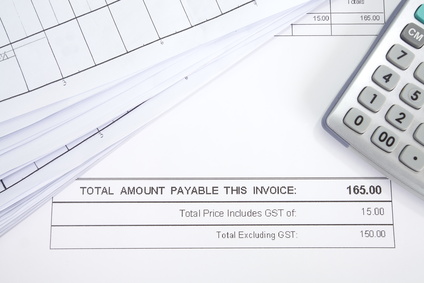The International Trade Blog Import Procedures
A Case of HaruMpF and MumPF
On: March 16, 2015 | By:  John Goodrich |
4 min. read
John Goodrich |
4 min. read
 Dear John:
Dear John:
(Perhaps this simple salutation will give you some insight into my curmudgeonly personality. How would you like it if every letter you received began with these two words, the phrase that both begins a letter and ends a romantic relationship? Worse, who decided that my name would be a euphemism for a restroom? (I actually know the answer to this bit of trivia, but I’ll save that for another article.))
I digress before I even begin.
Dear John:
I am a new importer. When doing my research I was assured my product was duty free. My Customhouse Broker also told me he would only charge $120 for the entry. I just received my first invoice from my broker. In addition to the $120 entry fee I see there is a charge for $329.08 for something called MPF and another fee of $118.75 for something called HMF.
Are these sucker charges? Is my broker taking advantage of me? My broker says these are supplemental fees charged by the government. How can something be duty free yet have additional fees of $447.83 tacked on?
Sincerely,
Elizabeth Angel
Dear Heavenly Betsy:
Let me take your questions out of order.
Is your broker taking advantage of you?
No. He is telling you the truth and is charging you something called a Merchandise Processing Fee (MPF) and another fee called Harbor Maintenance Fee (HMF). Both of these are charges levied on imported goods by the federal government and collected by U.S. Customs and Border Protection (CBP).
MPF is charged on formally entered imports at a rate of 0.3464% of the merchandise value with a minimum fee of $25 and a maximum fee of $485. This is how I can surmise that your shipment was valued at $95,000. Shipments subject to informal entry proceedings are subject to a flat fee of $2 when entered electronically, $6 when entered manually, and $9 when Customs files the entry on behalf of the importer.
Goods subject to free trade agreements and preferential trade programs are generally exempt from the MPF assessment. That is to say goods qualifying for NAFTA, CAFTA-DR, along with returned American goods under heading 9801 are exempt from MPF. Goods covered by the following special duty programs, however, are assessed the fee:
- US - Jordan Free Trade Agreement (JO)
- US - Morocco Free Trade Agreement (MA)
- Civil Aircraft (C)
- Generalized System of Preferences (A and A*)
- Intermediate Chemicals for Dyes (L)
- Pharmaceutical Products (K)http://www.cbp.gov/sites/default/files/documents/merchandise_pf_table_0.pdf
- Goods of qualifying industrial zones (QIZ) in Jordan, Egypt and the Gaza Strip
Some of the programs have additional exceptions to the MPF application. For example goods classified under 9802.0060 and 9802.0080 only pay MPF on the foreign value added to the product but not the U.S. component value. CBP maintains a reference chart at its website comparing the application of MPF under the various agreements and programs.
Additional details and exemptions regarding the MPF are found within the Customs regulations (19 CFR §24.23).
HMF is applied to goods arriving at United States marine ports maintained by the U.S. Army Corp of Engineers. It is assessed at a rate of 0.125% of the entered value. This fee, therefore, will not be charged on cargo arriving via air, truck or rail. There is no minimum nor is there a maximum to the fee. The Army Corp maintains most marine ports in the United States. To be certain your arrival port is subject to this fee, refer to the Customs regulations (19 CFR §24.24).
How can something be duty free yet have fees?
The above explanation is, perhaps, sufficient to answer your question about fees being assessed in addition to your duty obligations.
Consider also, however, that these fees are really no different than the charges assessed by the government on your phone bill or the tolls you pay for driving on certain highways. Government has found that raising revenue from users of its services is more easily accomplished than through other methods. It is also more politically expedient as few individuals will oppose a revenue increase on an industry that is poorly understood.
I realize this may seem incongruent with the trade policy expressed through your duty rate. But since when has our government expressed its policies clearly and consistently?
Is this a sucker charge?
As you know I am loathe to share my opinion, particularly in a public forum such as this. (Sarcasm intended.) I will instead share a few facts with you.
In fiscal year 2012, CBP collected an estimated $39.4 billion in duties, fees and taxes, an all-time high. This statistic is broken down as follows:
- $31.2 Billion - Duties
- $8.2 Billion - Fees & Taxes (HMF, MPF and other)
Fiscal year 2013 saw an increase in revenue collection of $42.5 billion.
CBP receives an annual budget of approximately $13 billion, not just for its commercial activities but to cover all of its wide-ranging operations. Its revenue collection efforts more than offset its costs. Is it even necessary for them to collect HMF and MPF?
I’ll leave it to you to answer your last question.
You can also do as I do and protest each time you pay the fee with a vocal HaruMpF and MumPF. It won’t lower your fees but it might make you feel better.
This article, which was first published in July 2009, has been updated with current rates and statistics.

About the Author: John Goodrich
John Goodrich is an International Trade Consultant and Licensed Customhouse Broker with more than 25 years of experience in international trade. He is currently the principal in the consulting firm of JD Goodrich & Associates where his varied industry experience results in practical, actionable advice for his clients.
An active member in the Twin Cities round table of the Council of Supply Chain Management Professionals (CSCMP), he takes a strategic view of the roles of international compliance and logistics in the greater supply chain.

